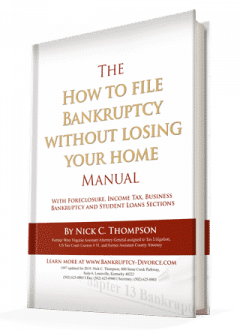Yes, it is hard to bankrupt student loans. In fact, we think that some judges go beyond the standard. Also, federal bankruptcy courts sometimes grant bankruptcy student loan discharges based on section 523(a)(8)’s “undue hardship” standard. However, while some courts allow attorneys and doctors to discharge a student loan, others are harsh.
Student Loan Bankruptcy Qualifications
⎆ What you need to know to file student loan bankruptcy
Here is an example of an attempt for one debtor to receive a disability discharge. The Debtor in Wallace v. Educational Credit Management Corp., 2010 WL 5764771 (Bye.S.D. Ohio Dec. 1, 2010), receives a diagnosis of diabetes with $32,500 in student loan debt. However, he only works for one year after graduation and never earned over $12,000. Instead, he becomes blind and is forced to leave the workforce due to his diabetes.
Next, the debtor undergoes dialysis, kidney, and pancreas transplants. He also loses his right eye, making him legally blind. In addition, he lives on $811 per month in social security disability. He lives with his father with $790 per month in expenses. So, essentially, after the first year of employment, he is working and the student loan balance then increases to $38,000.
⎆ To pass the Brunner Test, the debtor must meet these criteria
Interestingly, the bankruptcy judge states that the “Brunner” test is met only if the debtor shows the following:
(1) That the debtor cannot maintain, based on current income and expenses, a “minimal” standard of living for [himself] and [his] dependents if forced to repay the loans; (2) that additional circumstances exist indicating that this state of affairs is likely to persist for a signicant portion of the repayment period of the student loans; and (3) that the debtor has made good faith efforts to repay the student loans.
The court holds that the first prong of the Brunner test is met, but, the debtor did not prove the second. Because the debtor might someday be able to make payments, it didn’t satisfy the second prong of the Brunner test. Therefore, the court did not issue an order of non-dischargeability. Instead, it scheduled a status conference for two years later. Then, it will determine whether the debtor’s ability to repay is different. In the meantime, the court orders the debtor to pay $20 per month toward his student loan. This leaves him $1 in disposable income.
⎆ Other types of discharges for student loan bankruptcy
Kentucky uses the Brunner Test, but another test of the totality of the circumstances is becoming popular in other states to determine what an undue hardship is. Other types of discharges such as disability discharge are used to discharge the debt for government loans.
Other types of administrative discharges are available as well. For instance, if a parent loses a child to death and they were co-signers for the child, they get a discharge for the government student loans. Discharges for school closings, fraud, and other reasons also exist. You can also lose the disability discharge by returning to work.
Additionally, since 2007, working for a nonprofit corporation also discharges the Department of Education student loans over 10 years instead of 20 for income-based repayment plans.
In 2020, the official financial report of student loans is more than $1 trillion. That makes the student loans a higher debt level than all credit card debt. In fact, about 35% to 40% of all student loans are in default.
After 2012, almost all student loans at public schools were originated by the Department of Education. But some private lending will probably always remain. However, private loans have a much higher rate of default along with their inherent problems.
How to File for a Student Loan Hardship Discharge
A Student Loan Hardship Discharge normally requires you first attempt an IBR or ICR Loan Repayment Plan. There is a requirement that you exhaust your administrative remedies before you ask for a hardship discharge of government loans. If your income is zero and the payment can be zero, there is probably no hardship.
If a student loan discharge is an issue in your situation, please call me to discuss it. It may be worth a try because every year people do get them. However, the key is that repayment must be a real hardship—not just hard.
⎆ Qualifying for “real” hardship (undue hardship)
If the loan does not leave enough money for food, shelter, clothing, or medical care, it is a hardship. Doing without cable TV does not qualify for a hardship. The situation must hurt your ability to support yourself and your family. A perfect example of a real hardship is the nurse who has a child with a heart defect. The child needs constant care, preventing the nurse from working.
Life at the poverty level or being permanently on government support once guaranteed a student loan hardship discharge prior to IBR, but that is not necessarily the case today. However, private loans are more likely to be dischargeable since private loans do not have IBR programs.
⎆ Ordinary debts to a school are bankruptable
Ordinary debts to a school such as room rent or a direct loan to a college are just as bankruptable as any other debt. An IBR loan allows you to pay what you can afford on a student loan until the debt is 20 years old or until you are disabled. Then it is discharged forever. The payments are, however, decided by the government according to what they think you can afford on your income.
In the past, these IBRs were not fully-funded programs. However, if you owe $150,000 and live on $15,000 a year, this seems like a good option. Not all student loans (including private loans) qualify for IBR; therefore, applying for the program may not be required to obtain the undue hardship discharge.
Resources for Student Loans
Other Related Information
Bankrupt or Discharge Student Loans in Bankruptcy
Hardship Discharge Student Loans
Discharge Private Student Loans in Bankruptcy
Do you need help managing your student loan? Contact my office right away to start the conversation. Nick C. Thompson, Attorney: 502-625-0905


